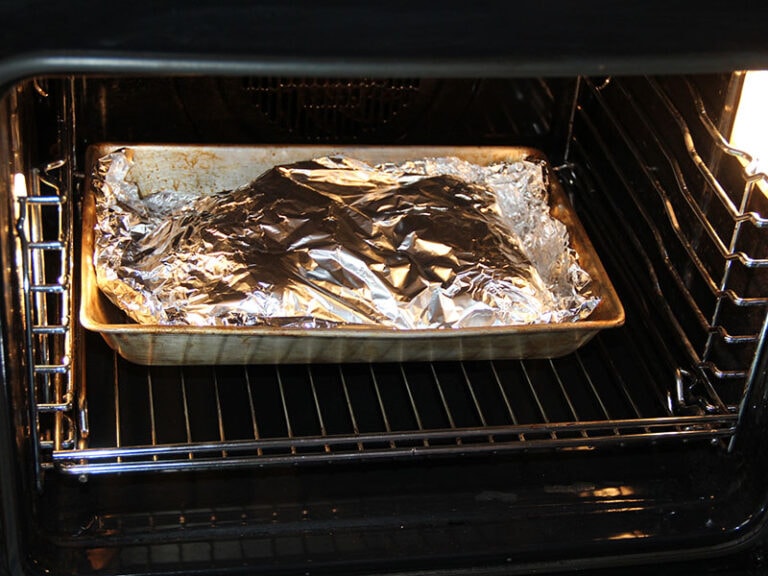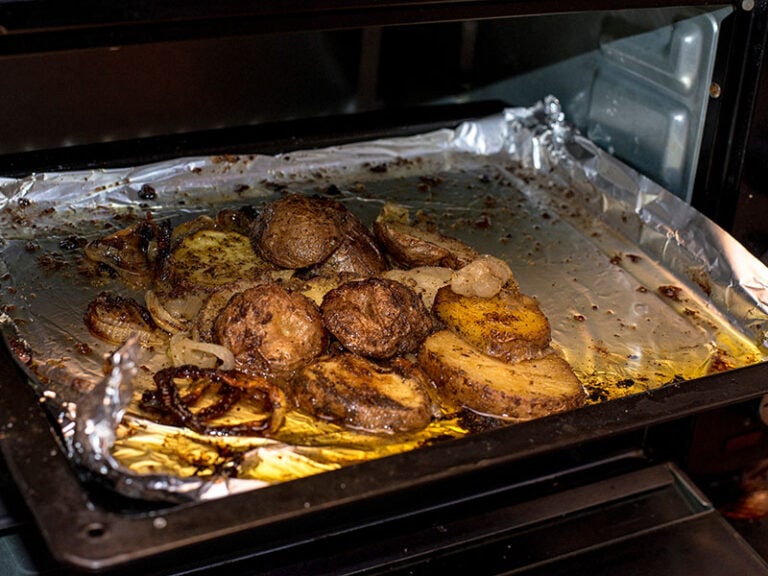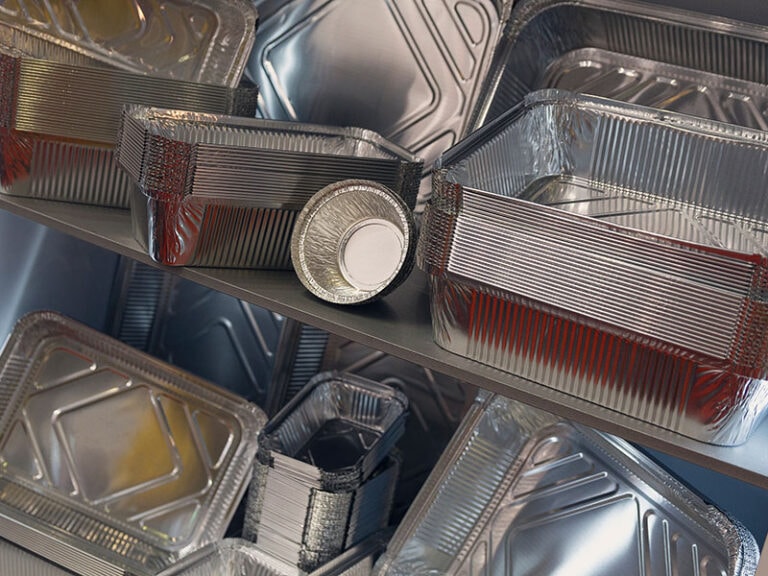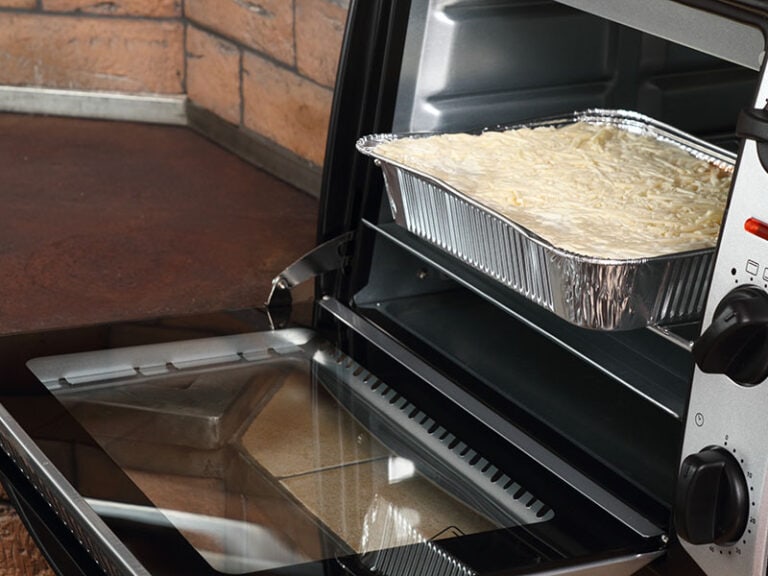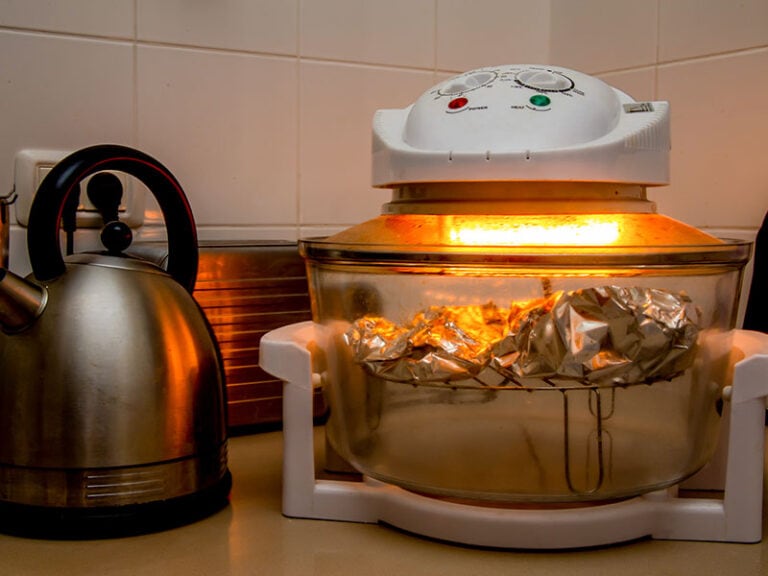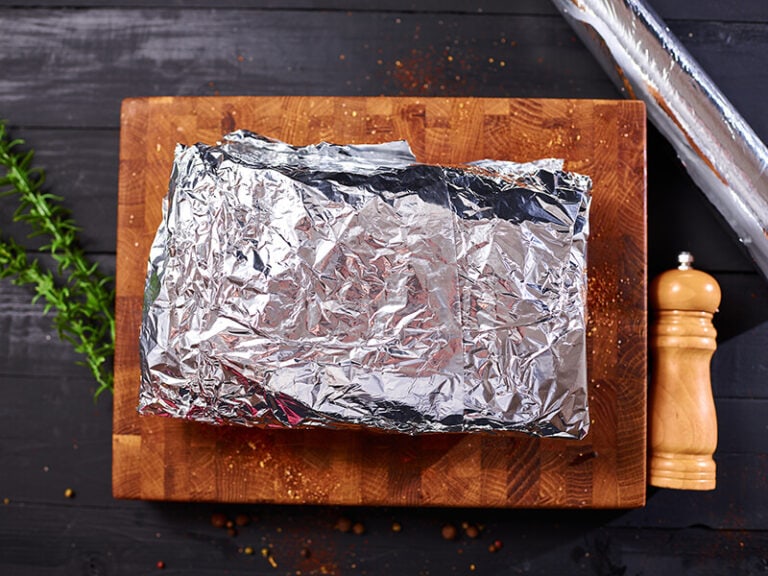Are you confused between tin foil vs aluminum foil? If tin and aluminum were not the same metal, how can tin foil and aluminum be the same thing? And even if they’re not the same thing, what makes them different?
If you have those questions, I can tell that you’re not alone; many people still have that confusion these days. Let’s identify those foils and eliminate your ponderings with this in-depth post!
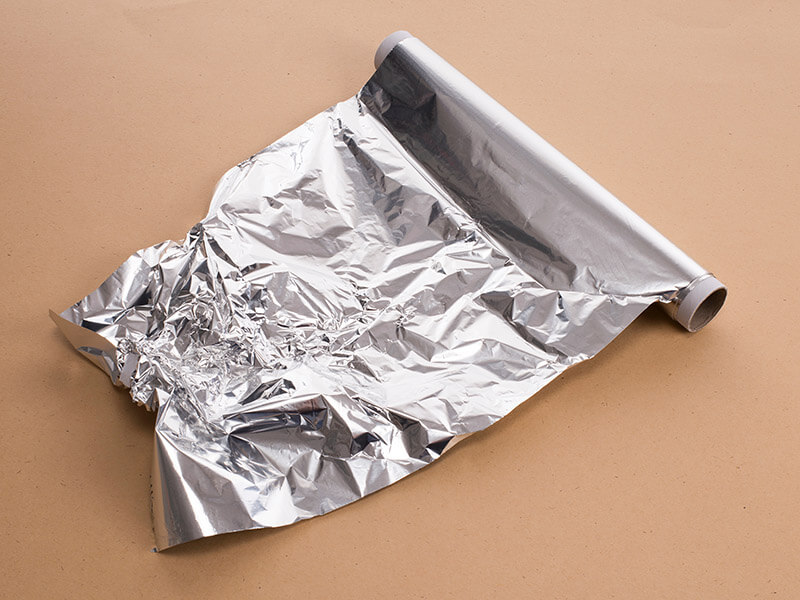
Are Aluminum Foil And Tin Foil The Same?
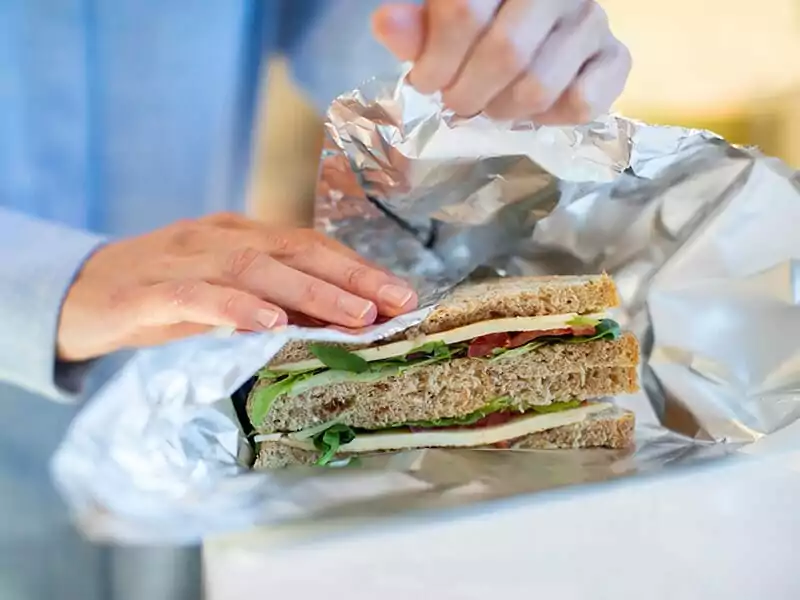
Technically, aluminum foil and tin foil are not the same. However, many people are still confused between those foils, and in most cases, they’re not having any problem following that mistake – which I’ll cover further down.
Foil is a thin sheet made of metal – almost any metal can be the material for foil. Therefore, you can find aluminum foil – the most common foil, gold foil, silver foil, and tin foil.
However, you can barely find any different foil out of aluminum in your local grocery stores. The reason is aluminum foil is the cheapest and has a wide range of versatile uses, including cooking, storing food, decorative, or even heat conductors.
You may be surprised to know that tin foil can do almost all the jobs of aluminum foil. In fact, tin foil used to be the most well-known material for packaging and storing food long before people started to use aluminum foil in cooking.
What Makes You Mistake Tin Foil With Aluminum Foil?
At this point, you can tell that aluminum foil and tin foil are not the same. So what makes people mistake them? Well, I can tell you 3 leading causes why:
Similarities In The Appearances
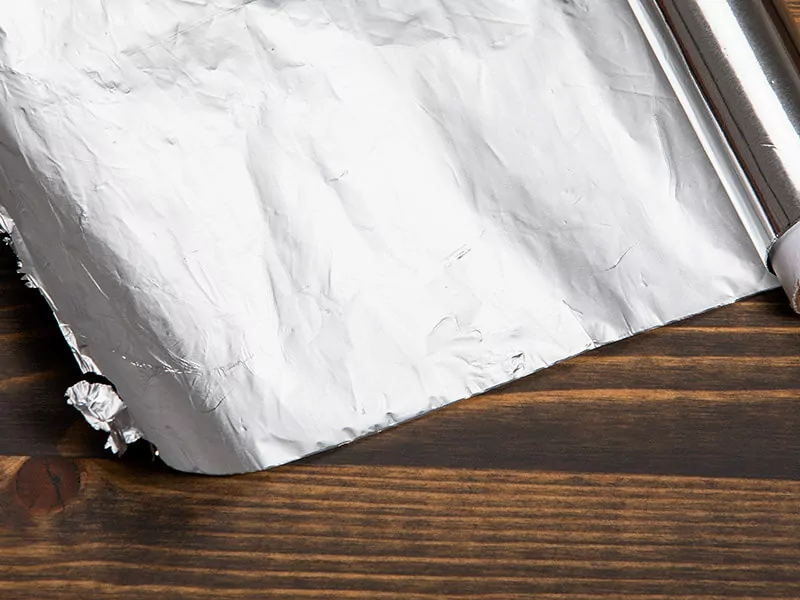
Let’s put the visible cause on top. Despite all the differences above, you can barely identify them in their appearance since they’re both thin sheets with one dull and one shiny side.
However, If you have both of these foils on the table, you’ll notice that tinfoil is slightly brighter than aluminum foil, and you may only feel their differences with physical tests.
Historical Truth Of Tin Foil And Aluminum Foil
To this particular misnomer, history has given it a touch. Aluminum foil has slowly taken over the place of tin foil that many people didn’t recognize the alteration. Let’s see why and how tin foil has been replaced by aluminum foil.
Aluminum Foil Begins Its Conquer Since 1910
In the late 19th century and early 20th century, tin foil was commonly used for packaging and insulating (2). Then there comes a higher durability foil with a lower price: aluminum foil.
Nevertheless, thanks to the ductility and cost-effectiveness of aluminum, many other manufacturers have begun to use it in their products in place of tin. Then aluminum quickly turned into a standard material of the packaging industry in the 1920s.
1940: When It Comes To Cooking
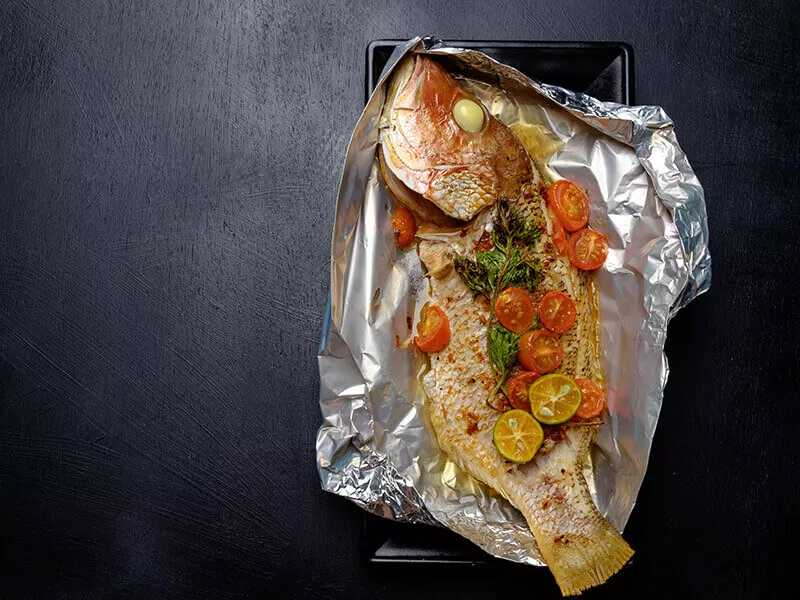
In the 1940 Thanksgiving event of Reynolds Wrap, an employee could not find a pan to carry his turkey. Suppose to be a quick-witted person; he grabbed some foil nearby to hold the turkey.
The trick surprised people at that time. After that, aluminum foil began to be used in cooking and ended up being known worldwide as a kitchen tool today.
Generation Influences
We all believe in what our parents told us, aren’t we? It’s completely normal that you’ve grown up in a family where your parents use the name “tin foil” instead of aluminum foil.
After 1940, only a few groups preferred to call aluminum foil by its actual name, while others continued to use the phrase “tin foil”. Though the trend has changed, that can be considered the leading cause why the term “tin foil” still exists today.
Some Particular Geographical Places
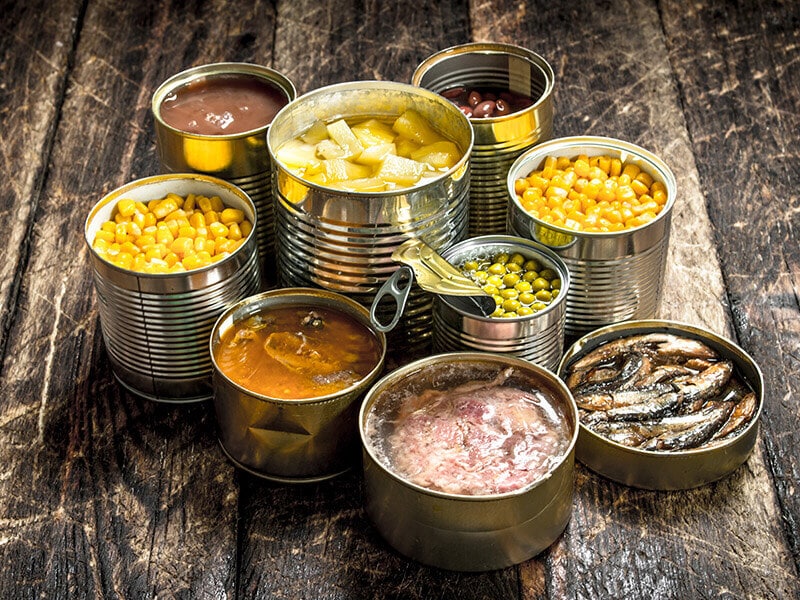
In many countries, people have the behavior to call the new things by their original. Therefore, though tin foil was obsolete a long time ago, people still use that name for aluminum foil.
For example, people in some parts of England still prefer to call “tin” for their daily items today, such as a tin of coke, a tin of beans, etc. While those cans were actually made of aluminum, the same thing goes with foil.
Most of them will tell you that that’s what their parents used to call those items, and they’re just followed. I believe it wouldn’t benefit you to argue with them.
The Key Differences Between Tin Foil And Aluminum Foil
Then aluminum foil rose up to be the cheapest material, and the rest is history. But the price is not the only thing that made aluminum foil take the first place of tin foil; here are some key differences between those materials.
Ductility
The poor ductility of tin makes it more complex in either production or use. In manufacturing, aluminum can be rolled much thinner and easier than tin does, which makes the quantity in each roll of aluminum foil is much higher.
In comparison, even though you can tear aluminum foil easily, tin foil can be torn apart as soon as you pull them out from the roll.
Durability
Besides the price, high durability is among the main reasons why aluminum foil takes over the place of tin foil. Tin foil is less sturdy and stiffer, so you wouldn’t want the struggle of wrapping your foods with this foil.
Regarding whether you can recycle aluminum foil and tin foil, I’d say that the recyclability of these two materials is more or less the same. And this factor can also be influenced by what purpose you use these two products for.
Heat Conductivity
The heat conductivity of aluminum foil is magnificent, approximately 3,5 times higher than tin foil, which makes it a greater company in your kitchen.
Due to this feature, aluminum foil is nowadays widely used for grilling and baking methods to reduce the time of cooking. Therefore, you can tell why cooking was not one of the foil uses before aluminum foil appeared.
Electric Conductivity
The electric conductivity of aluminum is approximately 4,2 times higher than tin (1). Therefore, aluminum foil is more suitable for electrical kitchen tools, as well as many other electrical uses.
Temperature Limit
Aluminum foil is famous for its significant temperature limit; with the melting temperature at 1220oF, it can’t be melted or burned while cooking. In contrast, the melting temperature of tin foil is approximately 445oF, even lower than parchment paper.
So if you ever wonder if it’s wise to put foil in crockpots or other typical kitchen appliances, you’ll need to take into consideration how hot the appliance is going to be. In most cases, aluminum foil has better temperature endurance than tin foil, so it’s also a safer bet.
Taste Alteration
The biggest problem of tin foil while storing food is retaining the “tin taste” – a bitter flavor. On the other hand, aluminum foil does have a certain contamination level to the food, but you may only feel the metal taste after cooking them with acidic foods.
Uses Today
Aluminum foil is widely used today, not only in the kitchen, but packaging manufacturers are using them a lot, such as potato chip bags. The electrical capacitor is one of the last products that are produced with tin foil.
Moreover, it has begun to replace tin foil in the electrical capacitors as well by the advantage of electric conductivity. So that you can assume that there will be a disappearance of tin foil sooner or later.
Check out how to make a waterproof tray with tin foil for containing liquid foods.
Deliciousness With Aluminum Foil
Suppose you’re in hand with a roll of foil and about to cook or prepare food, don’t skip this section. Since I’m positive that it’ll give you some delightful information.
Wrapping
With its waterproof and greaseproof features, along with aluminum foil’s standard thickness, it can efficiently lock the moisture of your foods. This isn’t just a storage method, but cooking foods wrapped with aluminum foil will also maintain their tenderness and juice.
When storing food, it’s not a bad idea to opt for heavy-duty aluminum foil. With the undeniable distinctions between heavy-duty and regular aluminum foil, you’ll see that the heavy-duty one can maintain your food’s freshness much more better.
Grilling
Talking about keeping the tenderness and juice of food, you can find other substitutes for aluminum foil, such as butcher paper or parchment paper. I’d suggest you compare butcher paper with parchment paper to know for sure which one best suits your preferences.
However, these substitutes meet the problems with open flames – which is absolutely no problem with aluminum foil. With a significant melting temperature at 1220oF, aluminum foil is among the handiest items of the pitmasters.
So if you’re ever feeling like making some lip-smacking desserts with your trusted grill, don’t forget to utilize aluminum foil as your sidekick.
Wrap your corn with aluminum foil before grilling to have a mouthwatering meal.
Baking
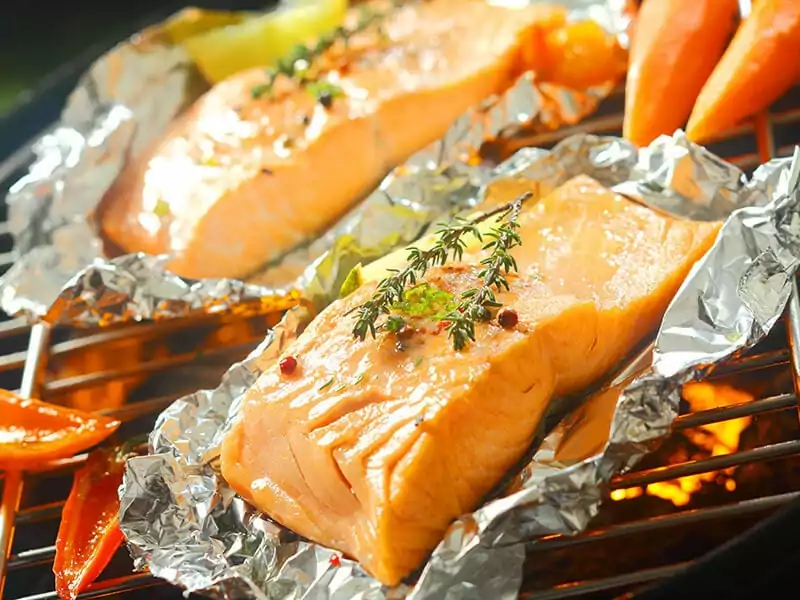
One of the questions that most people will have when using this product is probably “Can I use aluminum foil in ovens?”. Considering aluminum foil’s paper-thin appearance, it’s not hard to imagine that some would worry the product can catch on fire while in the oven.
However, there’s no need to worry about such unlikely things. Thanks to its high heat resistance, aluminum foil is oven-safe. There are multiple methods to cook with aluminum foil in the oven, such as wrapping, covering, or lining.
Things To Avoid When Cooking With Aluminum Foil
Even though aluminum foil has a wide range of uses in cooking, there are some risky things that you should avoid. Unsure if aluminum foil is compatible with toaster ovens? Worried about foil’s compatibility with crockpots? Read on to find out what you need to avoid!
Cooking Acidic Foods With Aluminum Foil
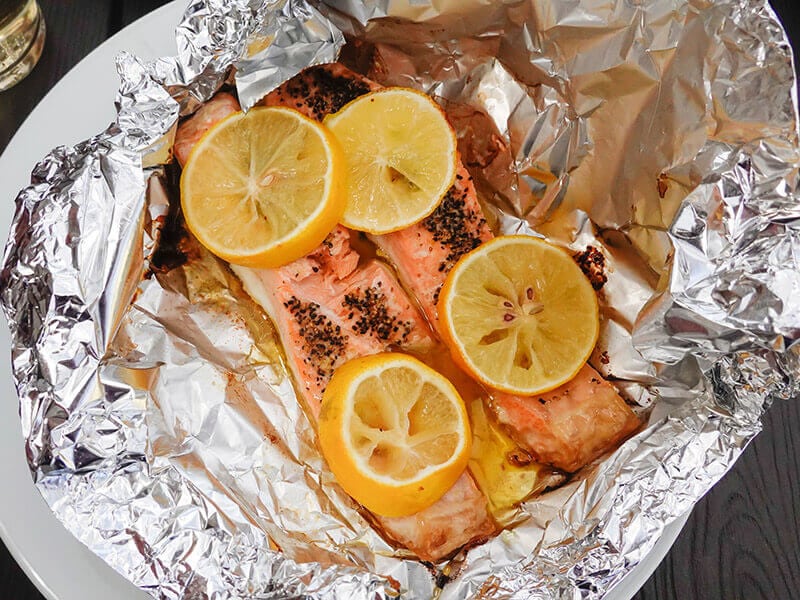
As mentioned above, tin foil has been taken over by aluminum foil because of the bitter taste that it retains in the foods. However, there are cases that you could also feel the metal taste in your food if you’re cooking acidic food with aluminum foil.
Overusing aluminum foil, and you’re accidentally consuming an excess amount of aluminum. Though it is a metal that already exists in our body, having too much aluminum than necessary will give you some symptoms such as confusion, muscle or bone pain.
Scientifically, the recommended amount of aluminum is no more than 24g for a 60-kilogram person (3). In plain English, you should simply limit using aluminum in your daily cooking.
Putting Aluminum Foil In The Microwave
When it comes to aluminum foil’s compatibility with the microwave, it’s a lot more complicated than it appears to be. Although aluminum foils are famous for their flame resistance, using them in the microwave oven is a risky thing to do since they are made of metal.
Putting aluminum foil into the microwave oven would bounce back the microwaves, thereby, may damage your oven. Moreover, your foil can start to arcing or even catch on fire by itself.
With the notable distinctions between microwaves and toaster ovens taken into account, it’s not a good idea to put aluminum foil in microwaves whereas it’s okay to do so with toaster ovens. So you should be mindful about this.
Some recipes call for a small amount of aluminum foil in the microwave oven, which is less risky. But if you see any spark, remove your food from the oven immediately and try to find some substitute utensils.
There’s a high chance of an explosion using aluminum foil in the microwave oven.
FAQs
At this point, I’m positive that you’re well understood that tin foil and aluminum foil are different things. However, if you’re still confused with the information or struggling with using aluminum foil, here are some of the most asked questions to solve your problems.
There’s No Problem Mistaking Tin Foil With Aluminum Foil
Even though tin foil is not the same as aluminum foil, there is nothing wrong if you or your friends mistook them. However, from now on, you can assume that all the foils in your kitchen or your local grocery store are made of aluminum.
After walking through this article, I’m positive that you have learned how to identify tin and aluminum foil and their history. Share this information with your loved people so that they won’t make that mistake.
Don’t forget to tell me about your foil experiences in the comment section. I believe that you have some valuable tips to share with other readers!
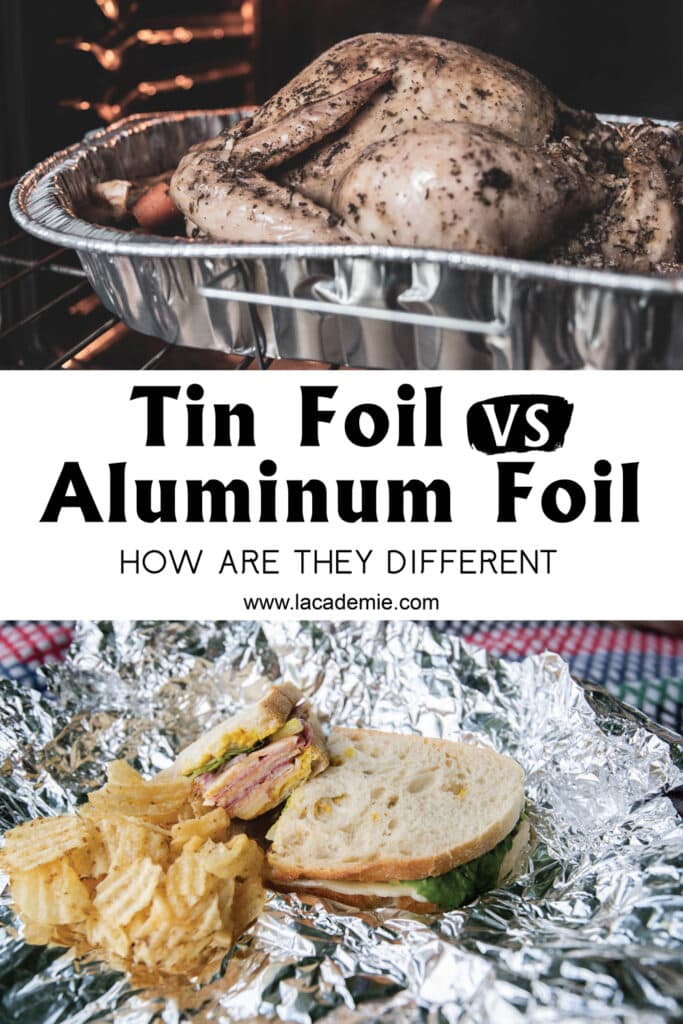
References
- Jean Tiberghien, G., 2021.
- En.wikipedia.org. 2021.
- Inchem.org. 2021.

